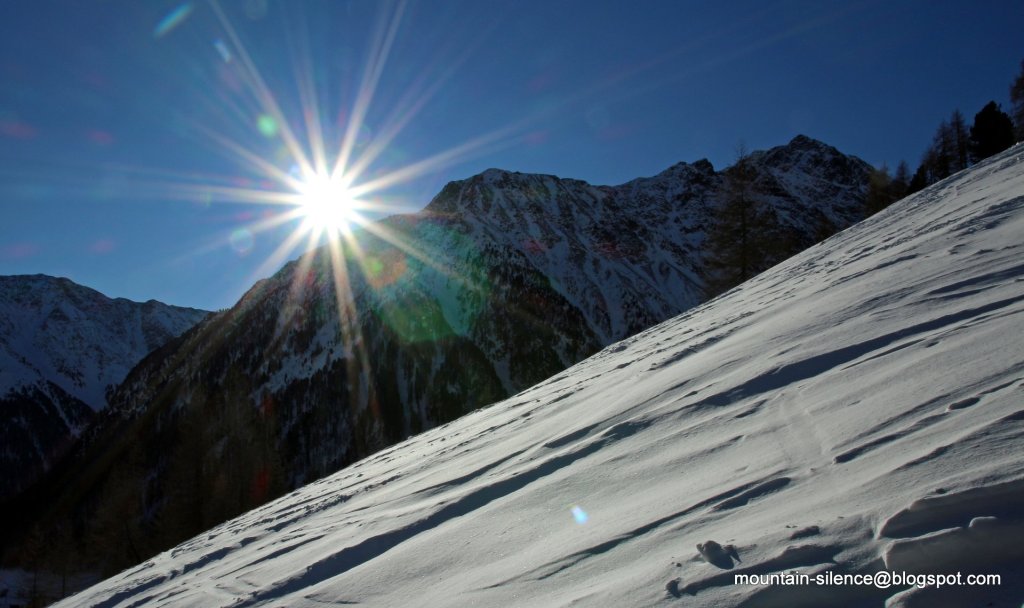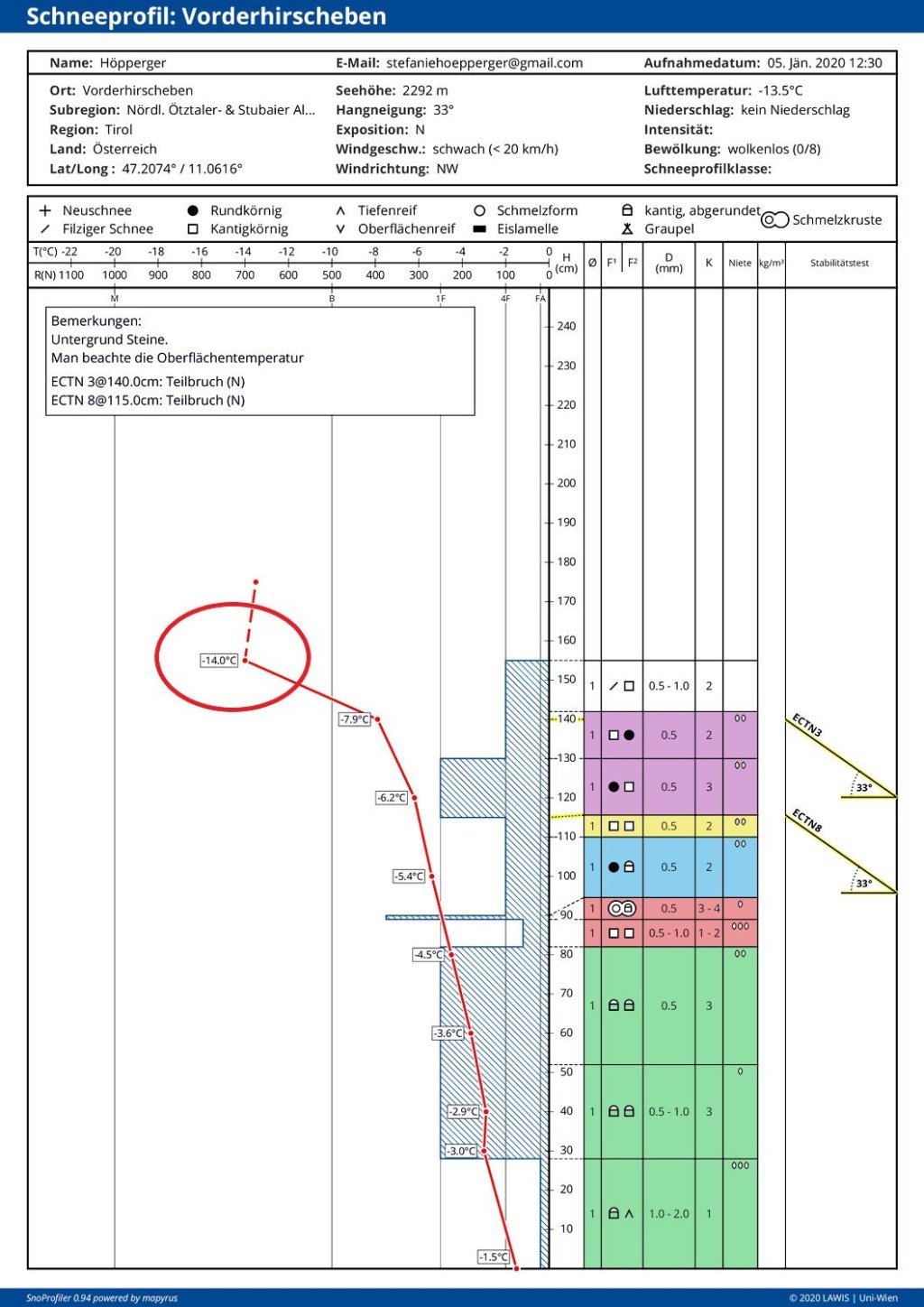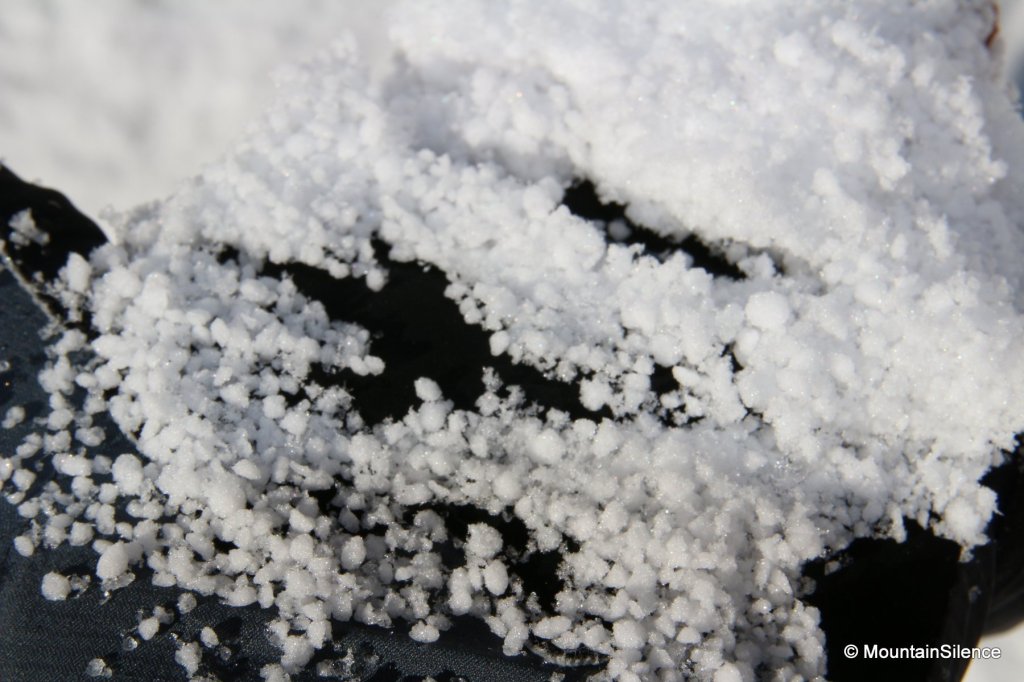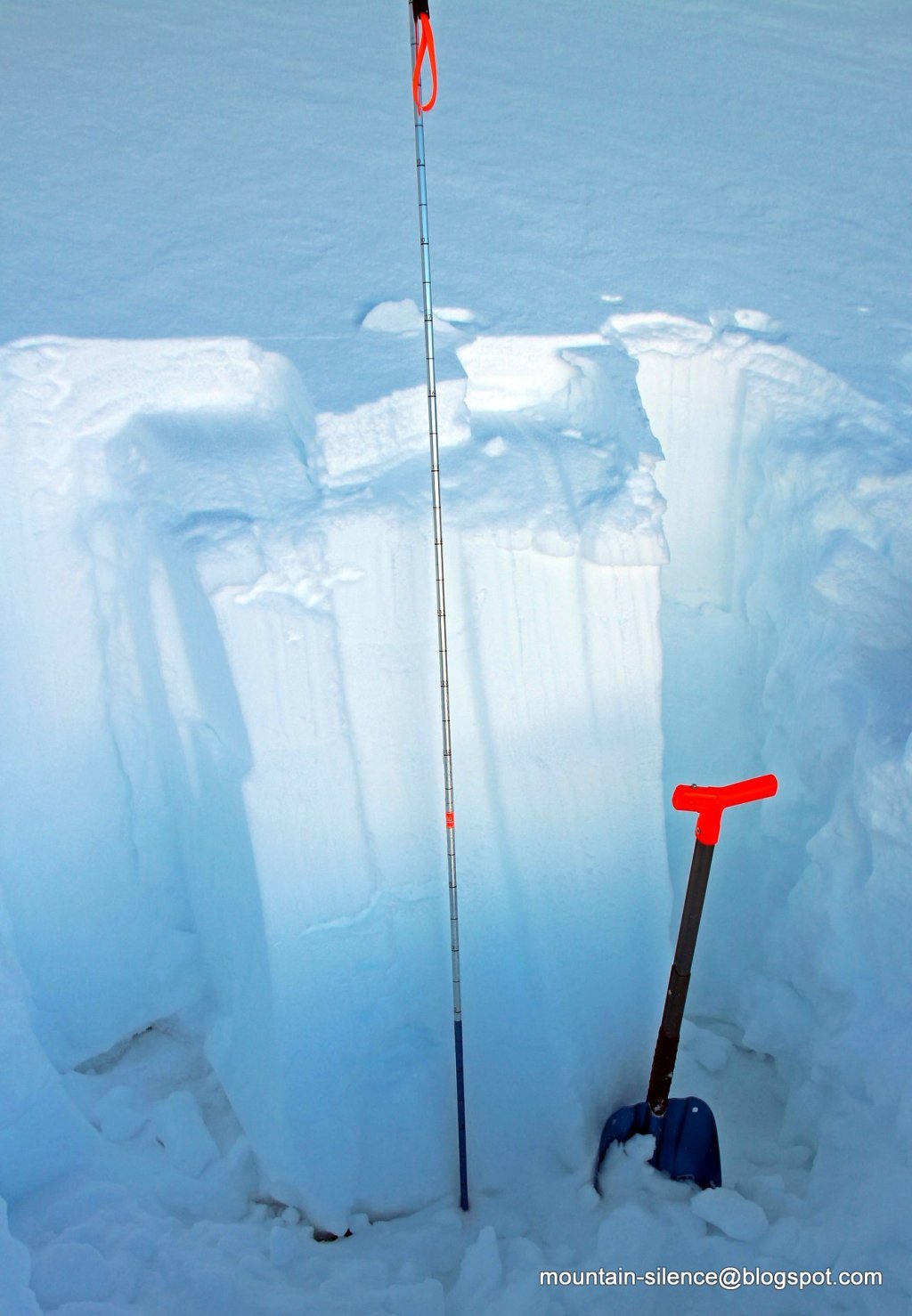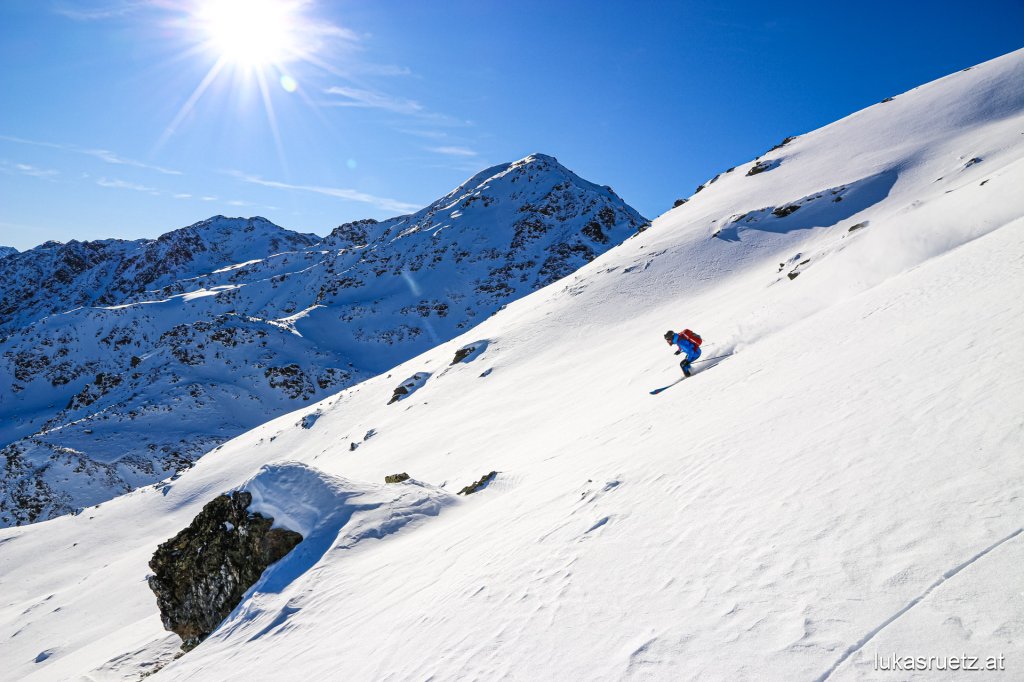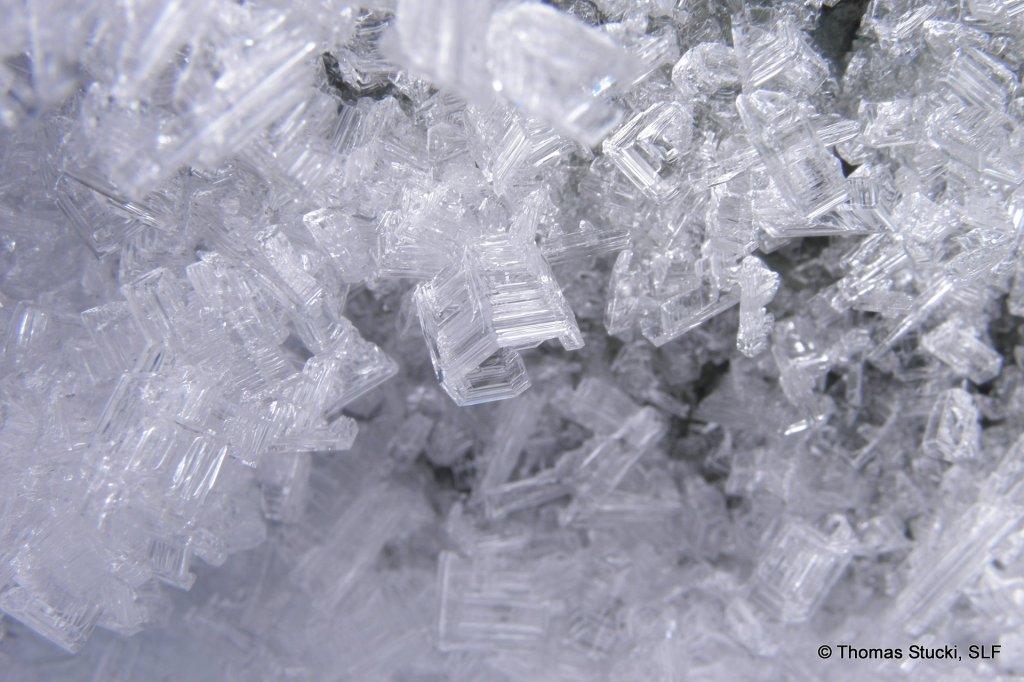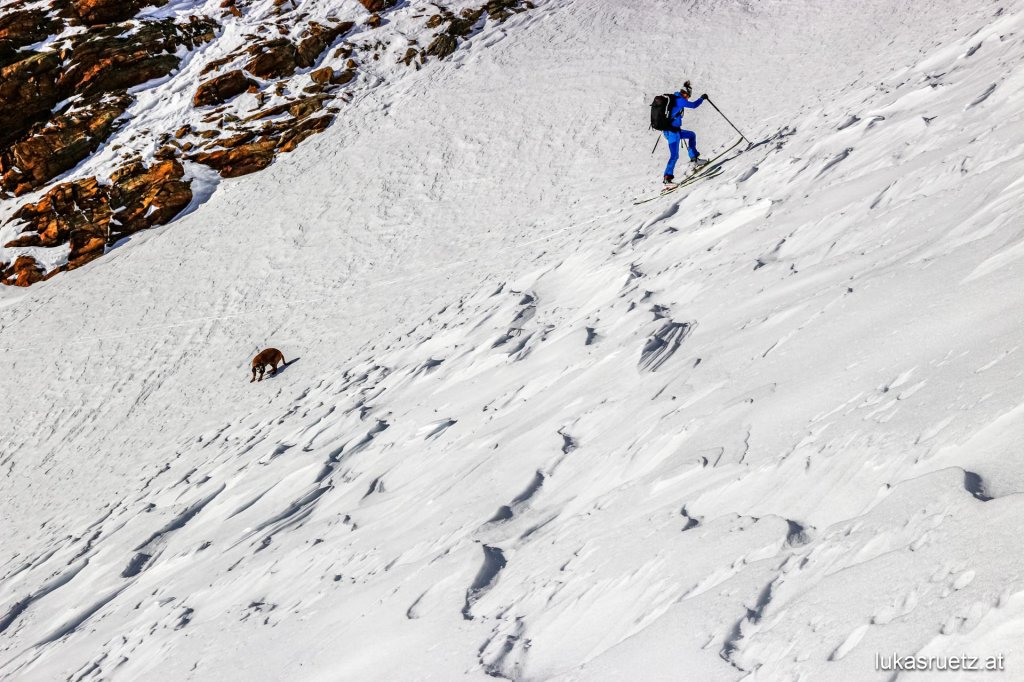It was really cold on the snow surface on shady slopes at the beginning of the week, -14°C (see profile), and in some places it was even below -20°C, according to the measuring stations. If you consider that the accumulating transformation already takes effect at a temperature difference of approx. 0.1°C per centimeter, it is easy to understand that at 6.1°C per 15cm, i.e. 0.4°C per cm, the transformation is progressing quite rapidly. On sunny slopes, the snow surface became mostly moist again during the day, allowing a cover to form during the night.
Profile Vorderhirscheben from 5.1.2020 | 2292m | N | 33°
Green:
Snowfall until the beginning of December (3.12.2019). The decomposition process is underway here. In the lowest layer, there are slightly pronounced cup crystals, which are also in the process of degrading again. The cup crystals have probably also formed through the cavities in the stones at the bottom.
